Inflammatory and tolerogenic myeloid cells determine outcome following human allergen challenge
- PMID: 37428185
- PMCID: PMC10333709
- DOI: 10.1084/jem.20221111
Inflammatory and tolerogenic myeloid cells determine outcome following human allergen challenge
Erratum in
-
Correction: Inflammatory and tolerogenic myeloid cells determine outcome following human allergen challenge.J Exp Med. 2023 Sep 4;220(9):e2022111108162023c. doi: 10.1084/jem.2022111108162023c. Epub 2023 Aug 18. J Exp Med. 2023. PMID: 37594459 Free PMC article. No abstract available.
Abstract
Innate mononuclear phagocytic system (MPS) cells preserve mucosal immune homeostasis. We investigated their role at nasal mucosa following allergen challenge with house dust mite. We combined single-cell proteome and transcriptome profiling on nasal immune cells from nasal biopsies cells from 30 allergic rhinitis and 27 non-allergic subjects before and after repeated nasal allergen challenge. Biopsies of patients showed infiltrating inflammatory HLA-DRhi/CD14+ and CD16+ monocytes and proallergic transcriptional changes in resident CD1C+/CD1A+ conventional dendritic cells (cDC)2 following challenge. In contrast, non-allergic individuals displayed distinct innate MPS responses to allergen challenge: predominant infiltration of myeloid-derived suppressor cells (MDSC: HLA-DRlow/CD14+ monocytes) and cDC2 expressing inhibitory/tolerogenic transcripts. These divergent patterns were confirmed in ex vivo stimulated MPS nasal biopsy cells. Thus, we identified not only MPS cell clusters involved in airway allergic inflammation but also highlight novel roles for non-inflammatory innate MPS responses by MDSC to allergens in non-allergic individuals. Future therapies should address MDSC activity as treatment for inflammatory airway diseases.
© 2023 Voskamp et al.
Conflict of interest statement
Disclosures: H.H. Smits reported grants from Lung Foundation Netherlands outside the submitted work. No other disclosures were reported.
Figures
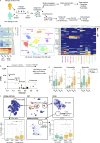
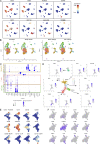



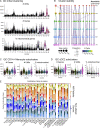
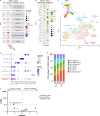

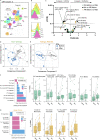

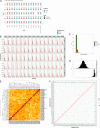
References
-
- Alladina, J., Smith N.P., Kooistra T., Slowikowski K., Kernin I.J., Deguine J., Keen H.L., Manakongtreecheep K., Tantivit J., Rahimi R.A., et al. . 2023. A human model of asthma exacerbation reveals transcriptional programs and cell circuits specific to allergic asthma. Sci. Immunol. 8:eabq6352. 10.1126/sciimmunol.abq6352 - DOI - PMC - PubMed
-
- Arora, M., Poe S.L., Oriss T.B., Krishnamoorthy N., Yarlagadda M., Wenzel S.E., Billiar T.R., Ray A., and Ray P.. 2010. TLR4/MyD88-induced CD11b+Gr-1 int F4/80+ non-migratory myeloid cells suppress Th2 effector function in the lung. Mucosal Immunol. 3:578–593. 10.1038/mi.2010.41 - DOI - PMC - PubMed
Publication types
MeSH terms
Substances
LinkOut - more resources
Full Text Sources
Research Materials
Miscellaneous

